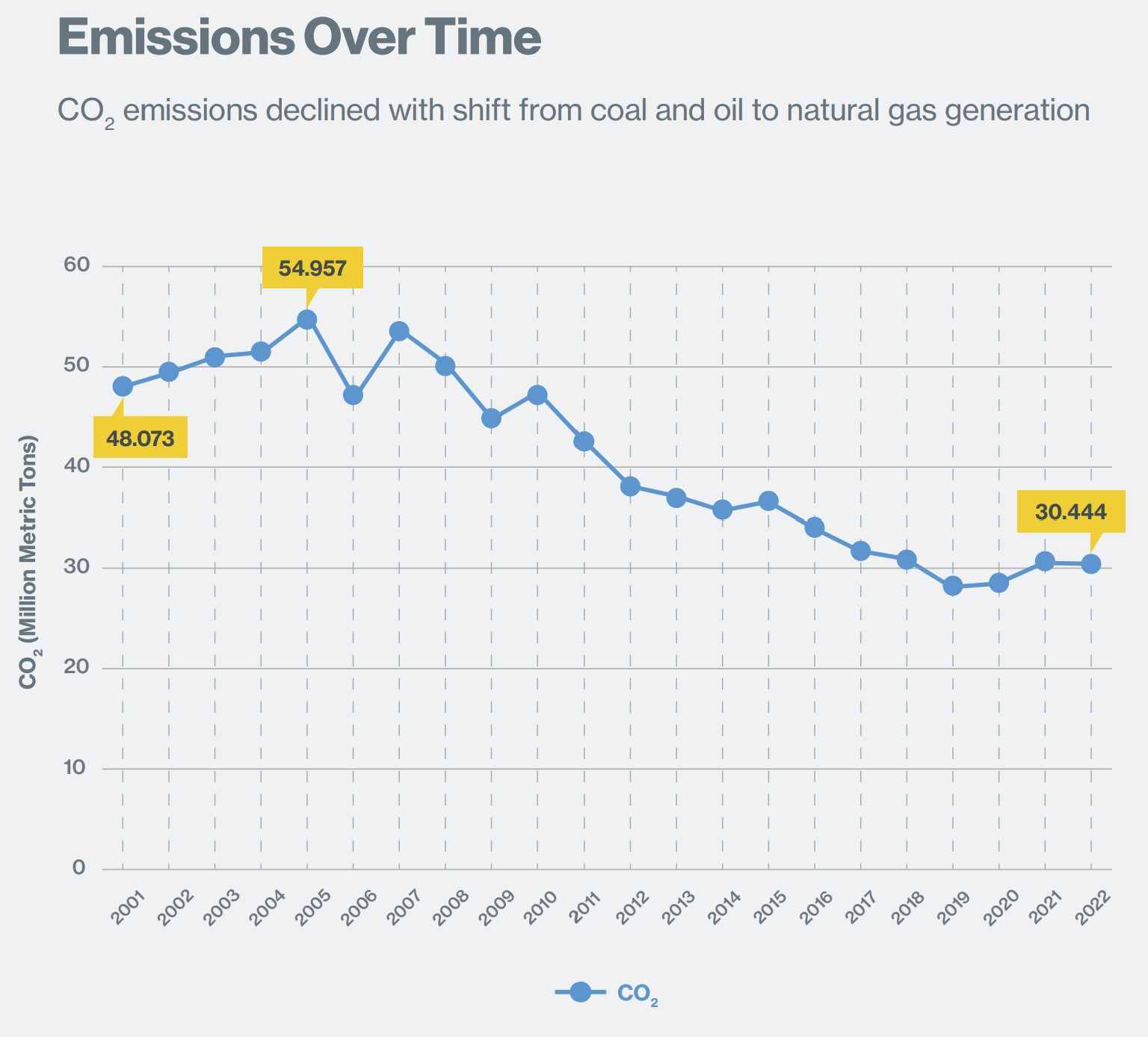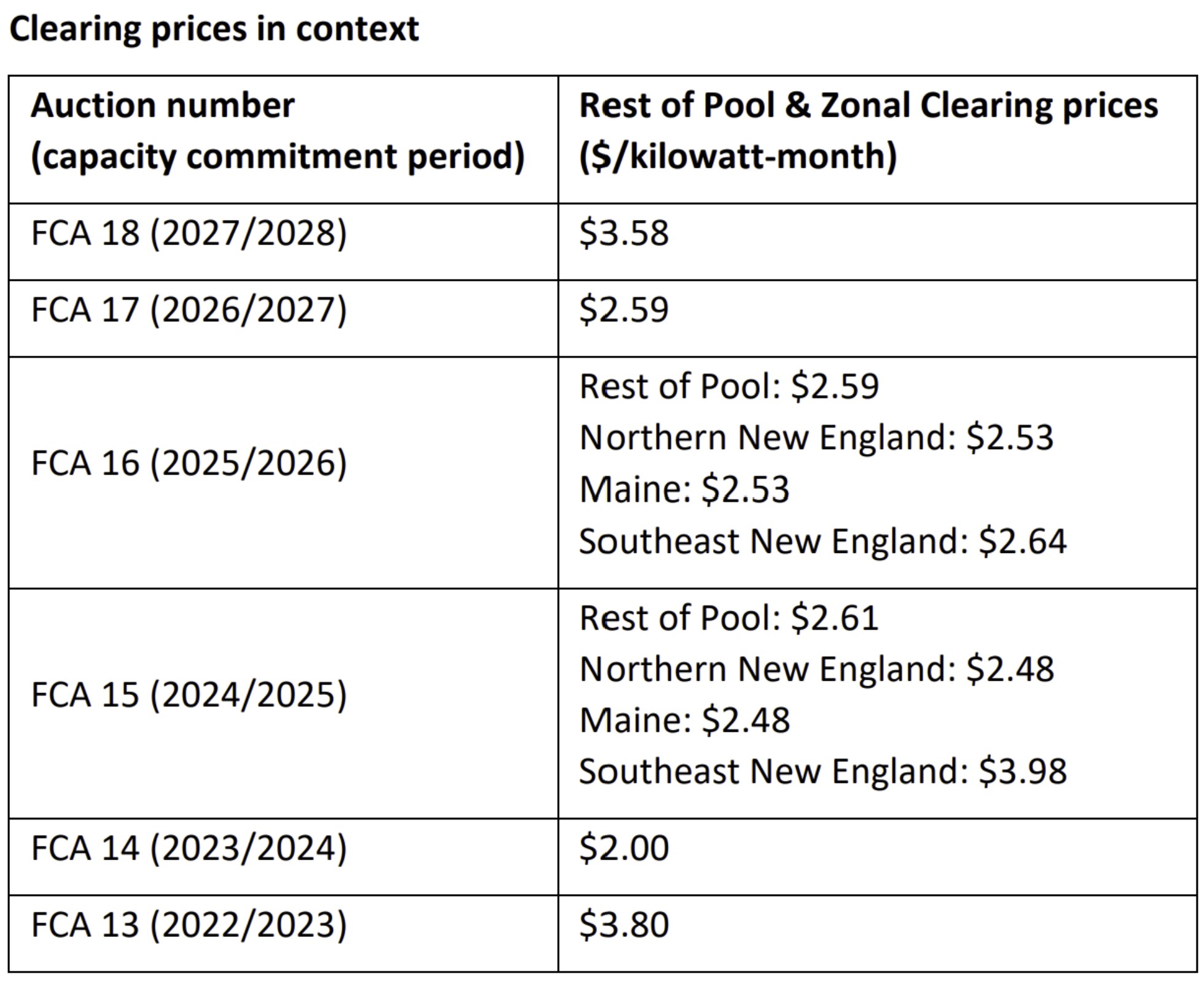The latest New England Independent System Operator (ISO-NE) capacity auction for 2027-28 concluded with coal failing to secure a spot, while solar, storage and wind all increased their market share.
ISO-NE announced that approximately 950 individual energy resources successfully bid to provide capacity if needed. Out of these, 603 were solar power or solar-plus-storage facilities, accounting for 16.6 GW of the total 31.5 GW of capacity.
The size of the sources ranged from 7 kW to 1.2 GW. The smallest facility, a 7 kW solar power plant named “Grasshopper 142 Blackstone,” is located in southeast Massachusetts. The largest solar plant, Three Corners Solar, which is located in Maine, secured a bid for 77.1 MW of capacity.

Facilities receive a monthly payment based on their available kWac capacity. The auction’s preliminary price is $3.58/kW per month, 38% higher than last year’s bid, but similar to bids placed five years ago.
The 7 kW Grasshopper solar facility bid that it could guarantee 2.462 kWac of capacity, earning a monthly payment of $8.81 and an annual total of $105. The facility must rebid next year. The Three Corners Solar facility, bid for its full capacity of 77.1 MWac but only for the summer period from June to September. It will earn $276,018 for each month and $828,054 for the summer season.
In 2019, Sunrun secured capacity payments for a distributed solar and storage portfolio for the first time, with delivery beginning under the contract in fall 2022. Since this initial bid, known as “FCA 13,” Sunrun has consistently secured contracts each year. Most recently, they won with three portfolios, totaling 5.67 MW of capacity.
The ISO noted that 1.7 GW of energy storage won bids, with 700 MW of those being new facilities this year. Energy storage first won capacity bids in the 2019 auction with 5 MW of capacity.
Offshore wind had a big moment with Vineyard Wind 1, an ~800 MW facility nearing completion, securing capacity payments on its first bid. The facility clinched two blocks: a 146 MW/50 MW winter/summer capacity and a larger 347 MW/185 MW block. Notably, wind farms typically offered more capacity in winter, whereas solar installations mainly provided value in summer or had reduced winter capacity when paired with energy storage.
The largest resource in New England to win capacity was the Seabrook Nuclear Power Plant in New Hampshire, which secured 1.25 GW of capacity.

The Merrimack Generation Station in Bow, New Hampshire, a 482 MW coal plant that had been winning capacity bids until 2023, failed again to win any bids. The plant’s last payments of $785,000 a month will end with the closure of the 2025-2026 capacity season. According to the plant owners, the only financial path forward is to rely on revenue generated from supplying electricity during winter peak demand periods.
There are no other coal facilities currently operating in New England. However, wholesale electricity emissions in the region have not decreased for several years. This is because natural gas still dominates the grid, representing 46% of generation. Additionally, the retirement of multiple nuclear facilities has contributed to this trend.
This content is protected by copyright and may not be reused. If you want to cooperate with us and would like to reuse some of our content, please contact: editors@pv-magazine.com.









It’s not absolutely true that Merrimack Station didn’t win any bids, although their coal was shut out and that’s what really matters. Their two small kerosene-fired turbines (17.6 kw each) did win bids.